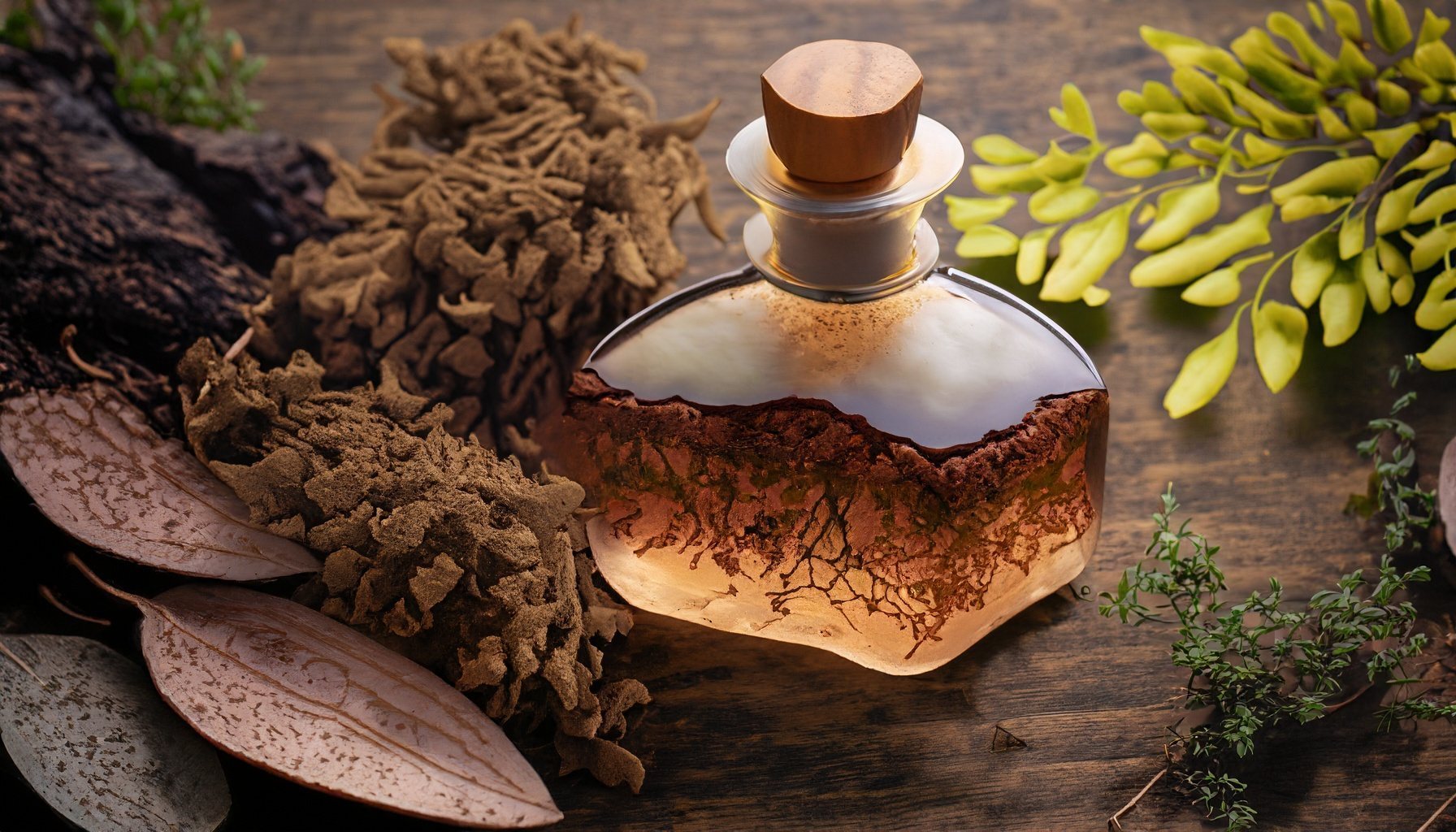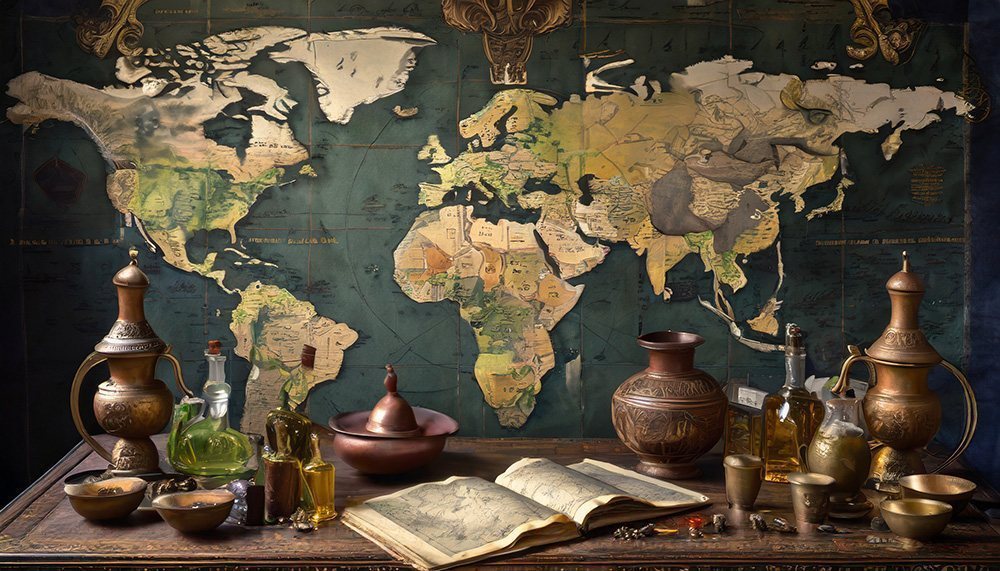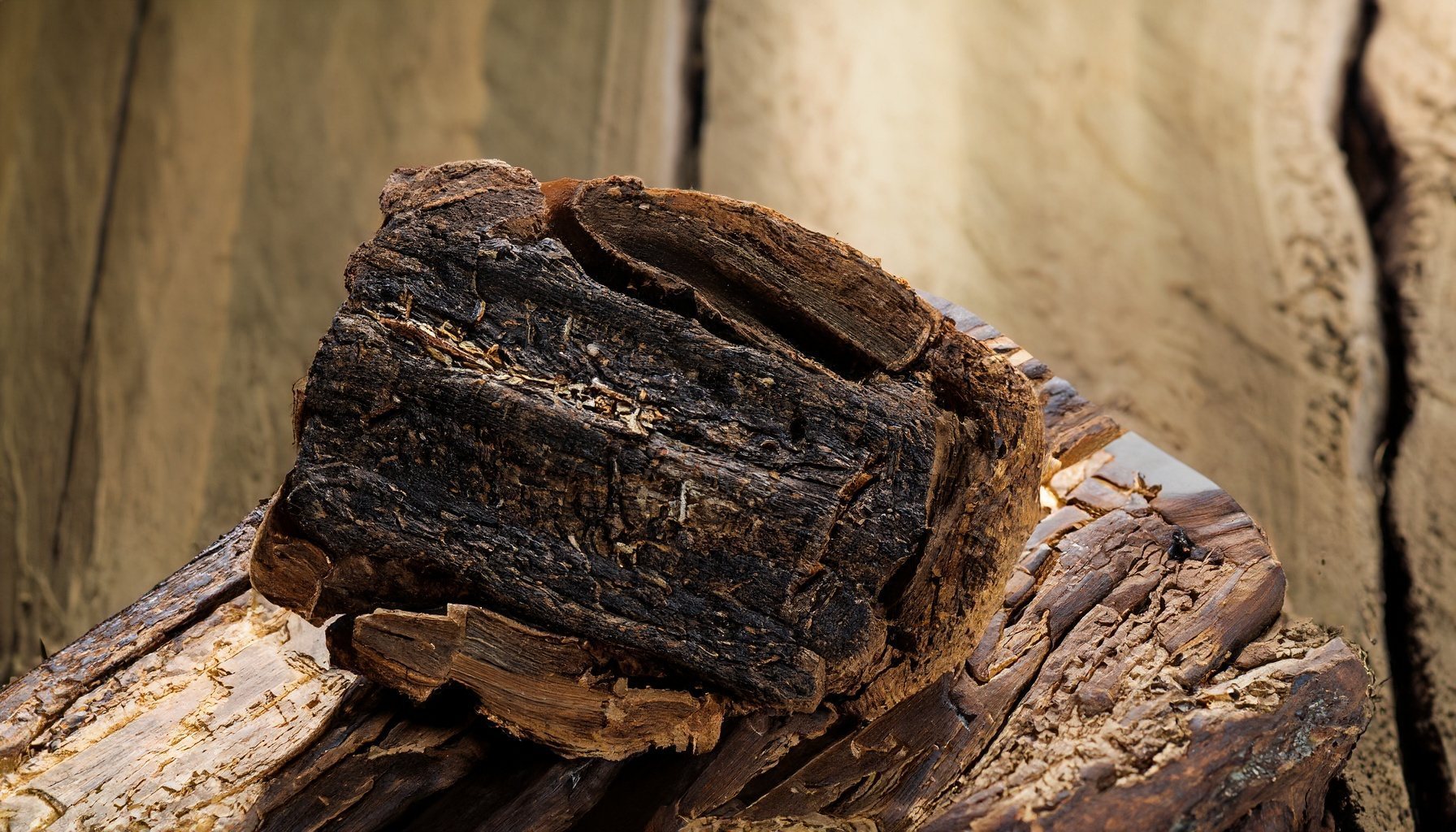
A compilation of woody and earthy natural aromatics, complemented by an historical overview that outlines humanity’s usage and influence on these important natural resources.
A Brief History
Ancient Civilizations
The journey of woody and earthy aromatics intertwines with human civilization’s growth, starting from ancient times when Egyptians, Indians, Chinese, and other cultures revered these scents. Cedarwood, myrrh, frankincense, and sandalwood, among others, were essential in religious ceremonies, medical practices, and the preservation of the deceased.
Middle Ages
As we advance to the Middle Ages, the trade of these precious aromatics spread across continents. The incense route became famed, connecting the East and West, leading to a flourishing of cultures and exchange of aromatic goods. European apothecaries stocked patchouli and vetiver, praising their medicinal and aromatic virtues.
Colonial Era
During the colonial era, European powers sought to monopolize the trade of these valuable commodities. Oud, in particular, was a symbol of luxury and opulence, while sandalwood’s exploitation led to its scarcity. The colonial powers’ extraction activities started to show the first signs of strain on these natural resources.
Industrial Revolution
With the onset of the Industrial Revolution, the extraction, production, and consumption of woody and earthy natural aromatics increased exponentially. The invention of steam distillation made the extraction process more efficient, leading to an increased supply and demand.
20th Century
The 20th century saw a dual path. On one hand, synthetic alternatives began to replace natural aromatics in various products due to overexploitation and conservation concerns. On the other, a niche market valuing authenticity and natural purity emerged, cherishing the original woody and earthy scents.
21st Century & Beyond
As we step into the present day, sustainability, conservation, and ethical sourcing are at the forefront. Overharvesting issues, particularly with agarwood (oud) and sandalwood, led to strict regulations and the cultivation of these trees. The discourse now revolves around balancing the insatiable appetite for these cherished scents with the imperatives of ecological preservation and species protection.
A List of 24 Compelling Woody and Earthy Aromatics
Woody Aromatics:
- Sandalwood: Known for its rich, warm scent and is often used in perfumes, incense, and aromatherapy.
- Cedarwood: Offers a sweet, woody aroma and is commonly found in various fragrance products.
- Oud (Agarwood): Prized for its complex, deep woody scent with a touch of sweetness.
- Guaiac Wood: Has a smokey, sweet-woody odor that’s commonly used in the perfume industry.
- Palo Santo: Known for its distinct sweet and woody aroma; often used for spiritual rituals.
- Pine: Offers a fresh, forest-like scent that’s both woody and green.
- Fir: Similar to pine but often has a more balsamic, sweet scent.
- Juniper: Features a crisp, woody and slightly fruity aroma.
- Birch: Has a wintergreen and woody scent, sometimes with a leathery note.
- Bamboo: Offers a green, woody aroma that’s light and fresh.
- Teakwood: Known for its luxurious, warm, woody, and slightly spicy scent.
- Mahogany: Offers a sweet, rich, and woody aroma often associated with furniture and luxury goods.
Earthy Aromatics:
- Patchouli: Known for its rich, earthy, and musky aroma; commonly used in perfumes.
- Oakmoss: A lichen that offers a rich, earthy, and woody fragrance often used in perfumery.
- Vetiver: Offers a complex, earthy, woody, and smoky aroma; a common base note in perfumery.
- Myrrh: Has a warm, earthy, and slightly balsamic aroma; often used in incense.
- Frankincense: Offers a spicy, woody, and slightly citrusy aroma, known for its calming effects.
- Cypriol: Known for its woody, spicy, and earthy aroma; often used in perfumery.
- Mushroom: Some varieties, like Oakwood mushroom, offer a rich, earthy aroma.
- Spikenard: Offers a woody, spicy, and earthy aroma; often used in aromatherapy.
- Cistus (Rockrose): Provides a warm, amber, earthy scent; often used in perfumes and incense.
- Tobacco: Offers a sweet, woody, and slightly earthy scent; often used in fragrances.
- Hay Absolute: Known for its sweet, grassy, and earthy aroma.
- Ginseng: Although better known for its medicinal properties, it has an earthy and woody aroma.




